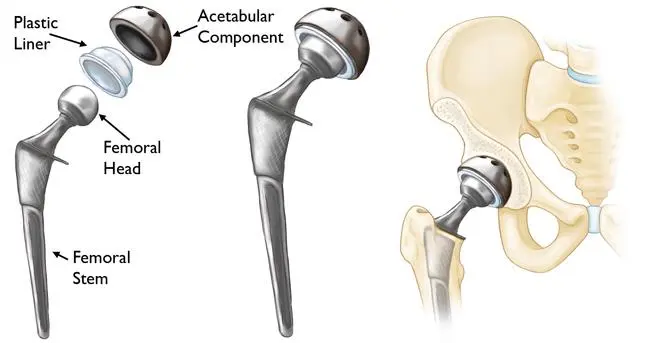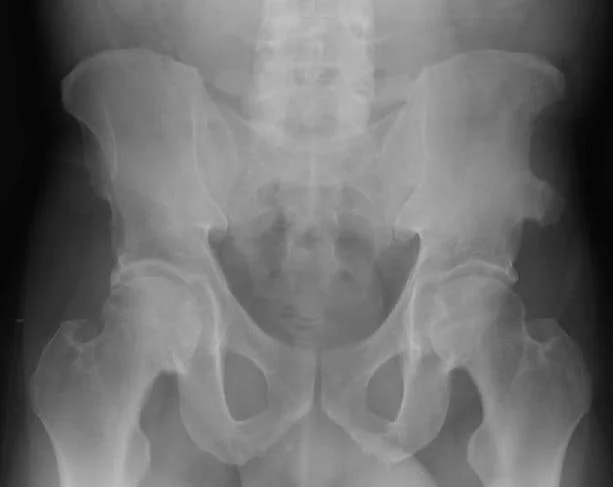Easy Ankle Rehabilitation Exercises You Can Do at Home
After an ankle sprain, it is necessary to start doing exercises again as soon as you can. You may be stiff and sore, but the sooner you get it moving, the faster you will recover, and the better you will avoid further injury. Range-of-motion exercises and simple stretching should be started first. Next, proceed to exercises focusing on strength, balance, and stability.
Every few hours, place an ice pack on the affected area if you have a moderate ankle sprain. To stop the ankle from swelling and become immobile, put on a compression bandage. After a few days of rest, begin doing some mild exercise. For pain, over-the-counter medications are available.
Introduction
Ankle sprains are common injuries that may cause problems for the rest of your life. Some people who sustain severe or recurrent sprains may experience persistent joint discomfort and weakness. One way to help stop persistent ankle issues is to treat a sprained ankle.
What Are Ankle Sprains?

Ankle sprains are injuries that arise by extending, rupturing, or spraying one or more of the ligaments that stabilize the ankle joint. Ligaments are robust, pliable bands that join bones. Tendons are what join bones and muscles. Ankle sprains are frequent, particularly in sports like football and basketball.
Ligaments are injured by sprains, which happen when a joint is forced to flex more than usual. The most typical kind happens when the ankle is fully weighted and the foot inverts, or twists in. Another possibility is for the foot to evert, or turn too far out.
At the moment of injury, popping or tearing is felt. Walking or moving the ankle causes pain both during and after the injury. Ankle stiffness and swelling are possible. The area surrounding the ankle could be bruised.
Excruciating pain makes it difficult to bear weight and move the ankle in cases of severe injury. A damaged nerve or blood vessel may be the cause of tingling or numbness in the foot.
Ankle sprains can be extremely painful, but they usually get better on their own. You can manage them at home without visiting a doctor, but sometimes it is a good idea to consult a general practitioner to receive a diagnosis. For a week or two, you might experience pain in your ankle and notice red and unpleasantness. See your doctor or chemist if your ankle sprain doesn’t get better within the period or if it worsens.
For the initial few days after spraining your ankle, follow the steps of RICE therapy: • Rest – for preferably 24 to 48 hours, avoid any harsh exercise but try to stay as mobile as you can. • Ice: every few hours, apply an ice pack to the ankle for up to 20 minutes.
If you don’t have an ice pack, frozen veggies wrapped in a tea towel work just as well. • Compression: While many people don’t require it, others find wearing an ankle support bandage useful. You could ask a chemist for help on this. • Elevate: Keeping the ankle elevated on a cushion for brief periods during the day may be helpful if it is really painful and swollen. You can ask a chemist for recommendations on medications and creams that might help with your ankle discomfort and swelling. These include non-steroidal anti-inflammatory medications (NSAIDs) like ibuprofen and painkillers like paracetamol.
Maintaining as much mobility as possible will aid in the healing process after an ankle sprain by putting some weight on your foot through activities like walking. It is advisable to refrain from engaging in physically demanding activities, such as jogging, until the discomfort and edema subside; nonetheless, it is crucial to maintain movement to prevent the ankle and muscles from becoming rigid. When you feel less pain in your ankle, start some mild workouts. You’ll need to perform activities that strengthen and balance you while still maintaining the flexibility of your ankle.
Rehabilitation training
To make sure that the ankle recovers fully and that reinjury does not occur, rehabilitation (rehab) training is essential.
If it is not too painful for you, you can start the healing process by walking or lifting some weight while using crutches.
Within 72 hours after your injury, begin range-of-motion activities as part of your rehabilitation. Over the ensuing weeks to months, carry out additional rehabilitation, which should include stretches, strength training, and balance drills.
You can strengthen your ankle using at-home or even office rehab exercises.
Types of exercises for a sprained ankle
- Range of motion
- Stretching
- Strengthening
- Balance and control
How to perform ankle sprain rehabilitation exercises:
Try to start each movement slowly, and base your routine of exercise on your current level of pain. If your pain is more than little, cut back on your training. Here are a few examples of common rehabilitation (rehab) exercises.
Remember that the type and timing of the rehabilitation exercises prescribed for you can change based on the wishes of your physical therapist or physician.
Ankle range of motion exercises
These are simple movements that you can perform up to five times a day to maintain your ankle’s flexibility and range of motion.
Ankle alphabet

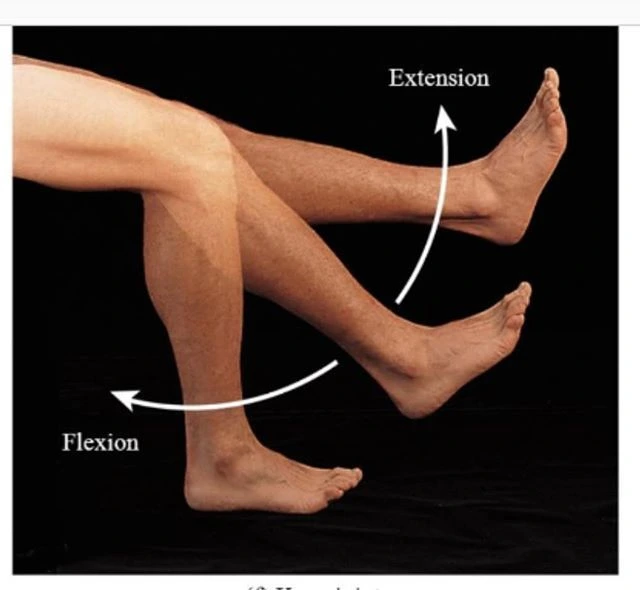
Seat on a couch or relaxing chair. Raise your leg out and trace the letters of the alphabet in the air with your big toe. Two or three repetitions of this are possible if there is no pain. This easy workout improves your ankle’s range of motion.
Knee motion
Place your foot flat on the ground while seated on a chair. For two to three minutes, carefully move your knee from side to side while keeping your foot on the floor. This helps to loosen and stretch the ligaments that surround your ankle.
Towel Curl
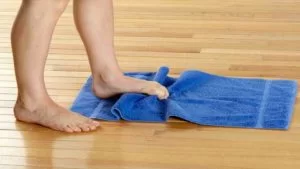
Sit in an upright chair and place a little towel on the floor in front of you. Taking off your shoes and socks, use your toes to gently grip the towel, crumple it up, and count backward from five. Next, remove the towel and carry on. Repeat 8 to 10 times, or less if discomfort arises.
This can also be attempted with a tissue.
Ankle stretching exercises
Your Achilles tendon runs behind your ankle and connects your calf muscles to your heel bone. The next series of exercises that you should start as soon as possible is stretching your Achilles tendon.
Towel stretch
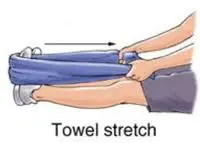
Legs out in front of you, take a seat on the ground. Encircle your foot’s ball with a cloth or strap. Toes moving in your direction, pull back on the towel. for 20 to 30 seconds holding the stretch. Refrain from going overboard. The only stretch your calf muscle needs to feel is mild to moderate.
Standing calf stretch
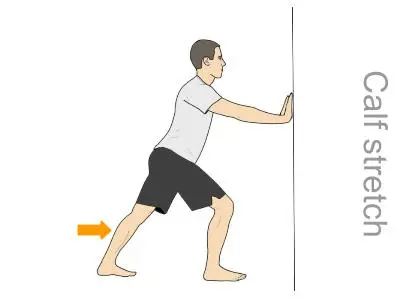
Place your hands on the table or wall in front of you for support. With your good foot ahead, take a step backward on your injured ankle. Bend your healthy leg’s knee gradually until you feel a modest stretch in the calf on your damaged side while maintaining your back heel flat on the ground. Holding this for thirty seconds, repeat three times.
Heel raise

Place your hands in front of you and lean them on a table, a wall, or on the back of a chair for balance. Step up on your toes carefully and return to the starting position with your feet shoulder-width apart. Start with 10 or so of these and gradually increase to 20 or more. Recall that you only want a slight stretch and no discomfort. You can then transition to using just the toes on the side of your injury when they are easier.
One-leg balance

Raise your normal leg behind you such that your weight is supported by the leg with the injured ankle while placing your hands on a wall, countertop, or chair back. For 15 to 30 seconds, try to hold this. Try performing it with just one or two fingers as you gain strength. When you’re stronger, carry out this action without stopping.
Ankle strengthening exercises
It’s appropriate to move on to strengthening exercises after you can bear weight on your sprained ankle with ease and have a good range of motion. A resistance band is necessary for these exercises. This is a basic elastic band that you can get online, from a physical therapist’s office, or a sports goods store.
Resisted dorsiflexion
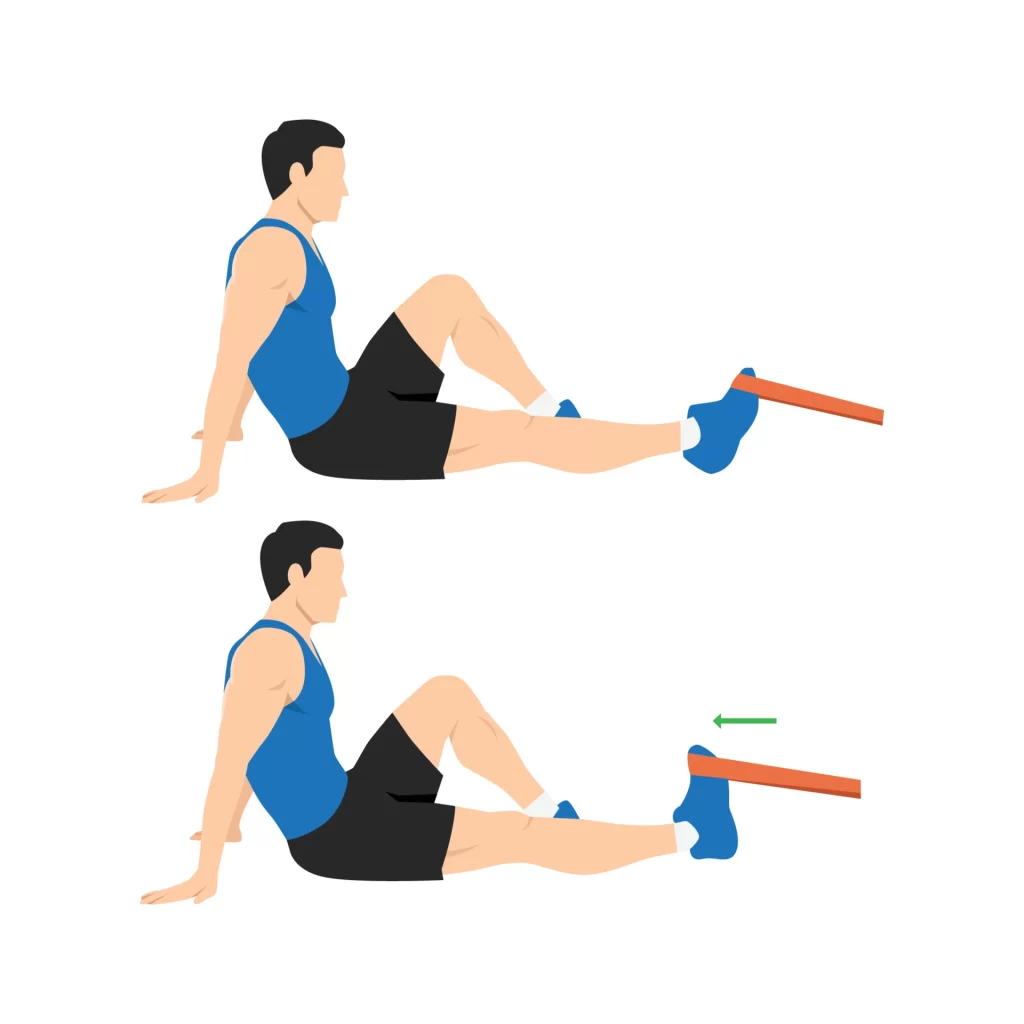
Place your injured foot under your good foot. Place the toes of your affected foot on top of the heel of your healthy foot. The good foot can provide support on top of the injured ankle while you gently lift your toes and ankle toward your face. Hold for 5 seconds. Repeat 10 times. Do 3 sets of 10 exercises.
Resisted Plantar flexion
Put your affected foot on top of your normal foot. Your healthy foot might offer resistance to the movement if you push against the floor. Maintain for 10 seconds, then repeat 10 to 15 times.
Resisted inversion
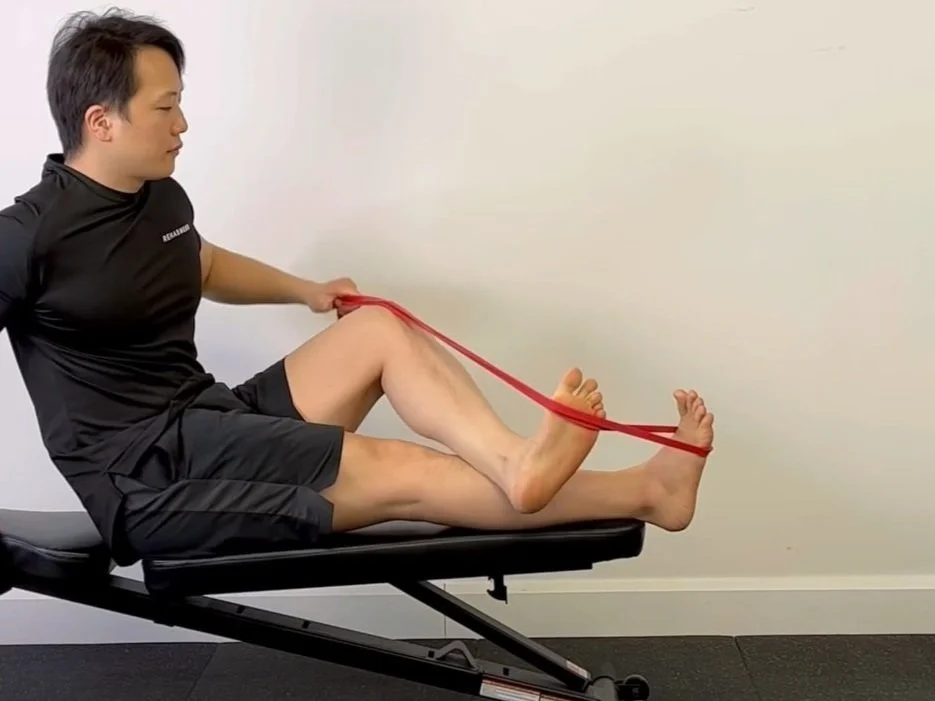
Hold your feet together and push them together. The injured foot might be prevented from moving by the resistance of the healthy foot. Hold for 5 seconds, then repeat 10 times.
Resisted eversion
Cross your legs over with your ankles crossed. Next, apply pressure on the outer edges of your feet. Your wounded ankle will be resisted by the strong foot. Repeat ten times while holding for five seconds. Work out for three sets of ten.
Isometric exercise
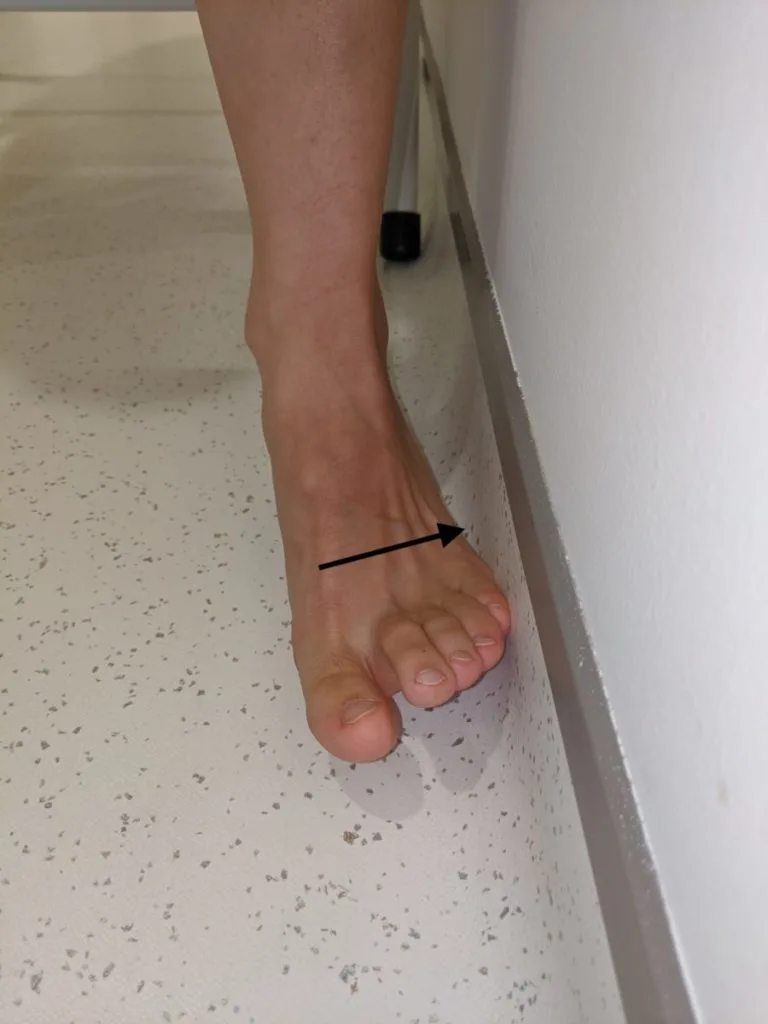
Exercise 1
Press your ankle “down and in” against a fixed surface, such as a couch. For ten counts, hold this position. Ten times over, repeat.
Exercise 2
Put your ankle up against the same surface in the “up and out” posture. For ten counts, hold this position. Ten times over, repeat.
Ankle balance and control exercises
Regaining control over your muscles is a crucial component of recovery. Nerve fibers are harmed during a sprain. Your brain needs to relearn its awareness of where your ankle is and how exactly to move it as you acquire strength. We refer to this sense as proprioception.
Basic balance
Attempt to keep your balance while standing on the damaged foot and raising the other foot off the ground behind you. If you are unstable, brace yourself on the back of a chair or countertop. Initially, try to hold this for a few seconds. Next, if you are able, increase to 30 seconds and 1 minute.
Balance with eyes closed
Now, close your eyes and perform the basic balance exercise. Because you can’t use visual cues to assist you in balance, this is significantly more difficult. Make sure you have a backup plan. Once more, see if you can get up to 30 and 1 minutes.
Pillow balance
While standing on a pillow, perform the same simple balancing exercise. This is far more difficult. Your foot will wobble a lot and you will need to correct your balance all the time, even if your ankle isn’t injured. Try to reach 30 seconds to one minute. If you start to get ankle pain, stop.
Pillow balance with eyes closed
The hardest exercise is this one. Close your eyes and see how long you can stand on a pillow without losing your balance. Make sure you have a support system on hand. Work as long as you can—up to 30 or 1 minute. But even if you are unable, don’t give up.
You’re retraining and strengthening the impulses that travel from your ankle to your brain by performing these exercises.
How to Treat an Ankle Sprain: Dos and Don’ts
- Warm up and stretch before any exercise.
- If you frequently sprain your ankles while playing sports, USE ankle braces.
- If you’re overweight, DO lose weight.
- DO maintain your fitness.
- DO utilize the crutches and medications that your doctor has given.
- DO follow the physical therapy and RICE guidelines.
- If the swelling hasn’t gone down after two days or has become worse, you can’t walk on your harmed ankle, it gets hotter or redder, you have a fever, or you feel like your ankle is popping, catching, or giving way, DO call your doctor.
- DO contact your doctor if you experience any of the following symptoms in your foot: numbness, tingling, blue or dusky color, or cold toes (evidence of cut-off circulation).
- If seven to ten days following the sprain, you still don’t feel better, DO contact your healthcare professional.
- DO contact your doctor if you experience leg pain or swelling since this could indicate a blood clot.
- AVOID doing anything that will make you swell more. Steer clear of high activity levels, standing, sitting with the ankle hanging, and early use of heat.
- Wait until the ankle is strong and the discomfort and swelling have subsided before returning to sports.
FAQ
What are the five phases of ankle sprain rehabilitation?
Five phases for ankle rehabilitation Protection, Rest, Ice, Compression, and Elevation. Use an ankle brace or get your ankle professionally wrapped to prevent further damage to the joint. Until you can run normally without experiencing pain in your ankle, take it easy.
How quickly can a sprained ankle be strengthened?
All it takes to strengthen and increase the flexibility of your muscles and ligaments is to walk and extend your foot. Strengthening and balance can be enhanced by performing exercises like standing on the injured leg for ten seconds at a time.
After spraining my ankle, how long should I wait to work out?
Going back to regular exercise
When it’s safe to resume your usual workout regimen, the doctor let you know. doctor often suggests that patients who have ankle sprains stay away from strenuous exercise for at least six weeks.
What makes an ankle sprain worse?
To support and stabilize your ankle and provide protection, your healthcare professional might advise using crutches, a boot, or a brace or splint. Excessive pressure applied to a sprained ankle may exacerbate the injury, increase discomfort, and delay the healing process.
Does a sprained ankle need to be massaged?
After a sprain, massaging your ankle may help lessen discomfort and swelling, but you should exercise caution. If the pain or swelling in your ankle seems to be getting worse, stop massaging it. You should be on the lookout for any changes to your ankle since you might have a major injury that needs to be treated by a medical specialist.
What should and shouldn’t be done if you sprain your ankle?
To help you recall them, consider the acronym “RICE” (rest, ice, compression, and elevation). Uninjured ankle movement is possible with a compression wrap, splint, or brace. Always wait 72 hours after an injury before using heat as this will exacerbate swelling. Stronger muscles, faster healing, and fewer injuries are all possible with physical therapy.
References
- Sprained ankle: Rehabilitation Exercises | Kaiser Permanente. (n.d.-b). Kaiser Permanente. https://healthy.kaiserpermanente.org/health-wellness/health-encyclopedia/he.sprained-ankle-rehabilitation-exercises.te7604
- Moore, W. (2017b, May 17). What exercises help if you have a sprained ankle? WebMD. https://www.webmd.com/pain-management/ankle-sprain-exercises
- Hecht, M. (2019b, February 15). 15 exercises for your sprained ankle. Healthline. https://www.healthline.com/health/sprained-ankle-exercises
- Ankle Sprain Exercises | London Foot and Ankle. (n.d.-b). https://www.londonorthopaedicsurgery.co.uk/therapies-exercise-regimes/ankle-sprain-exercises/
- Carle Foundation Hospital. (n.d.-b). Managing your ankle sprain – symptoms & treatment | Carle.org. https://carle.org/conditions/ankle-sprain



